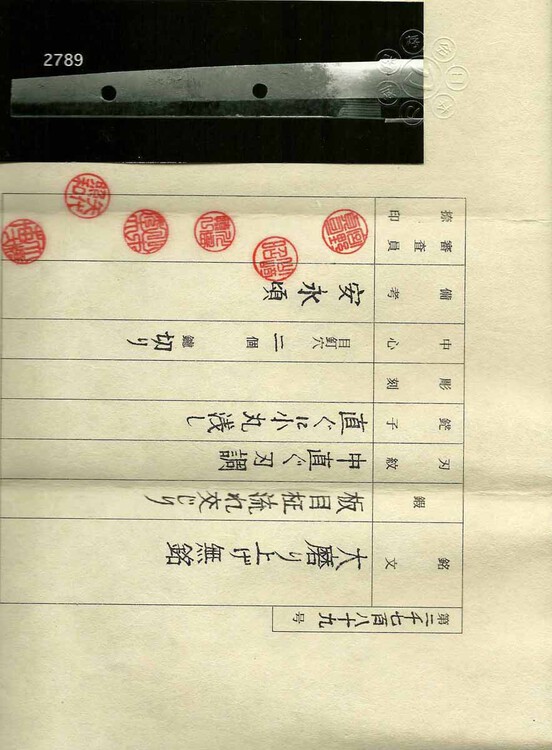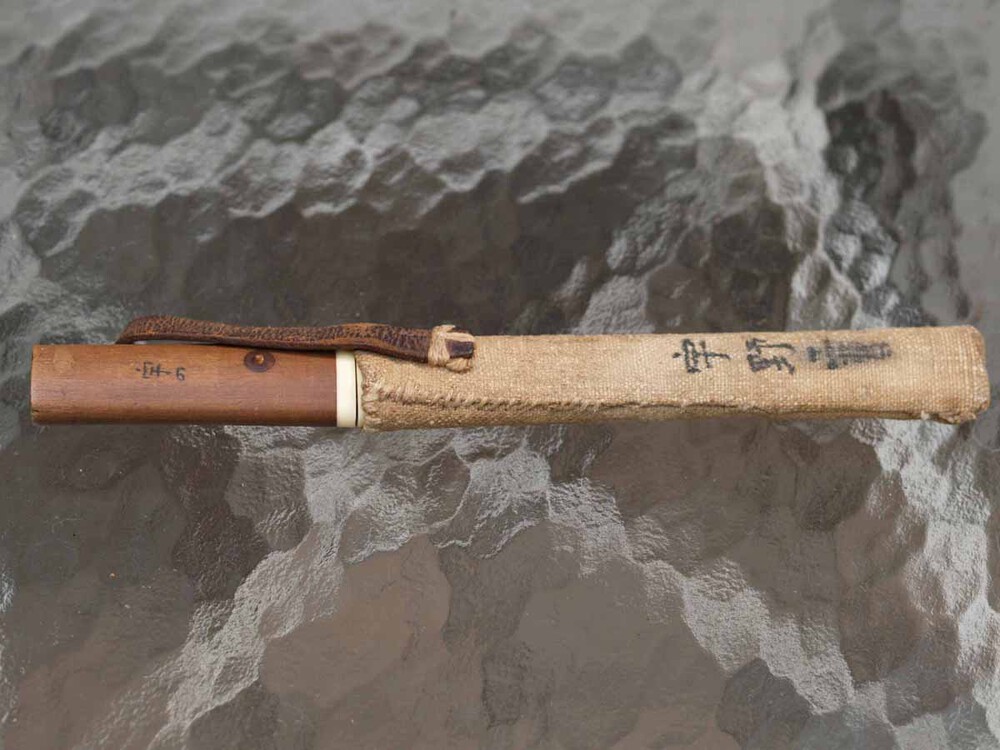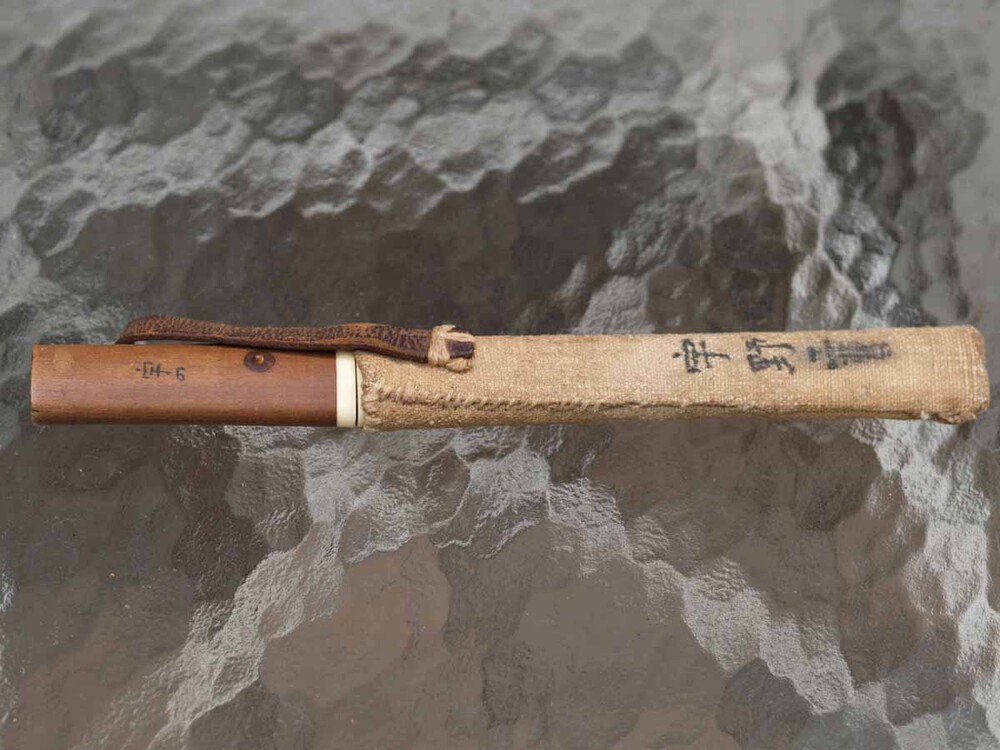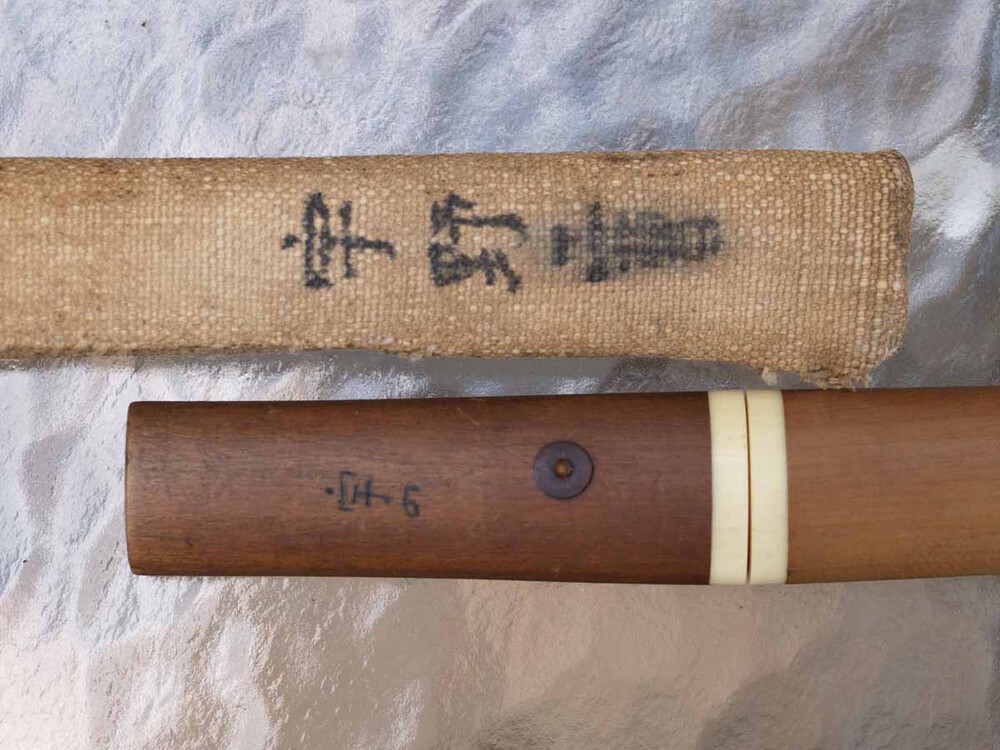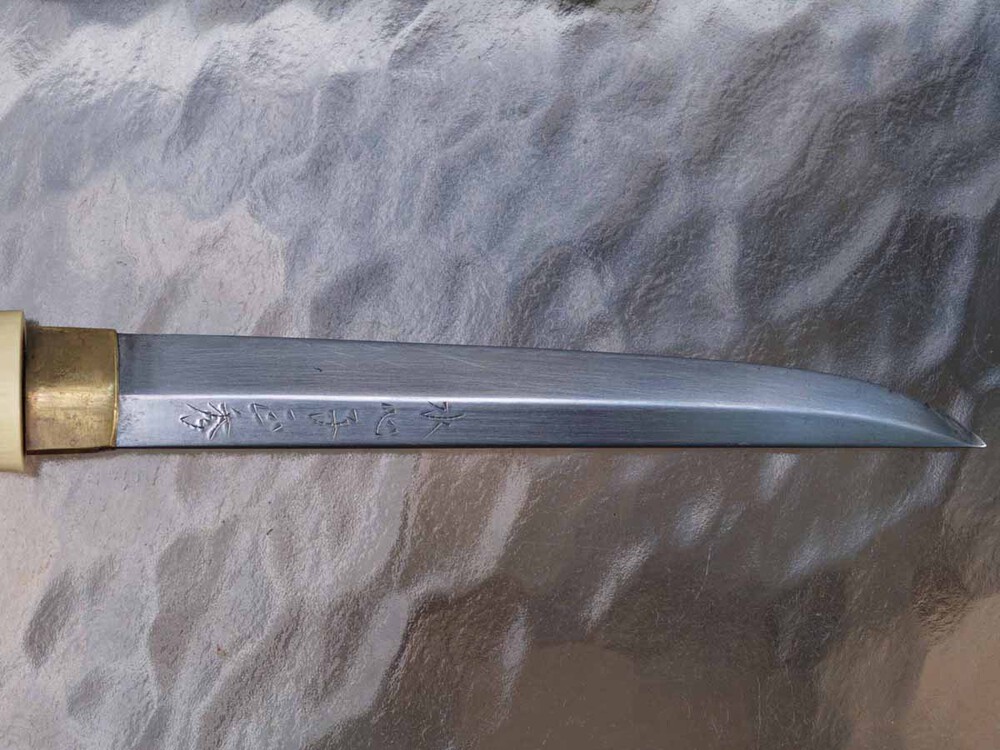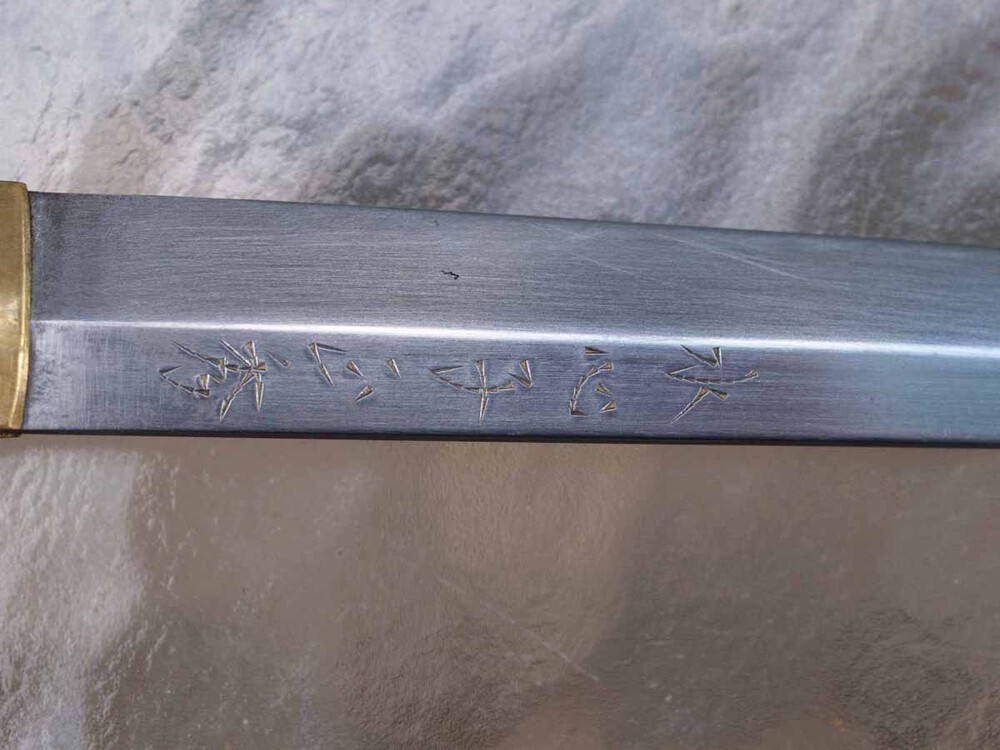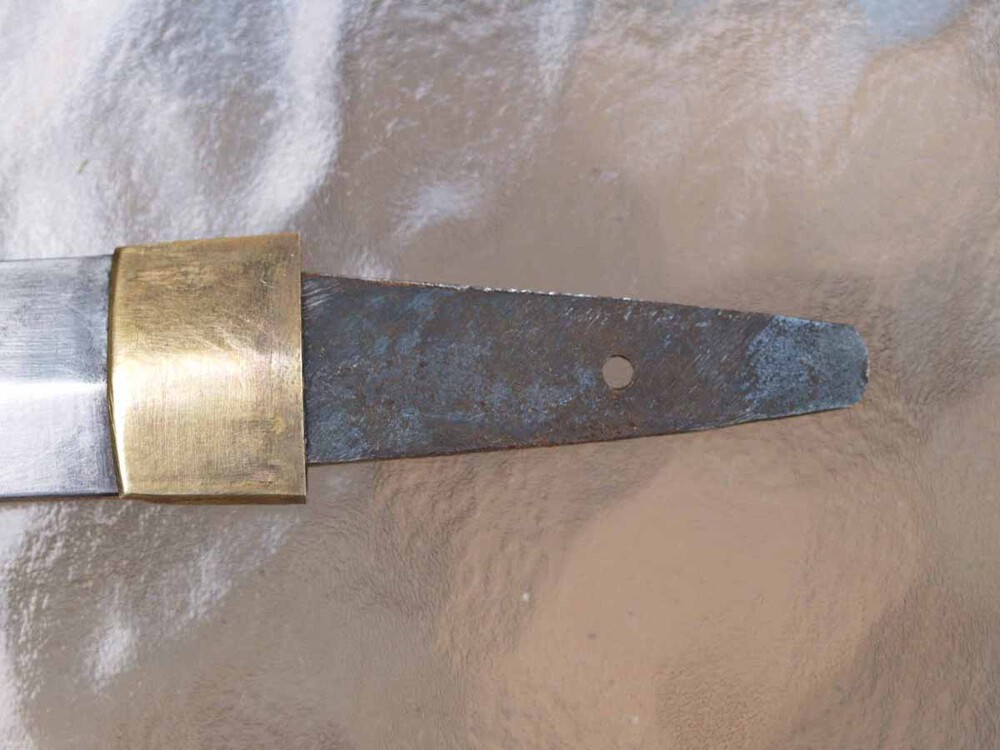
Robertex
Members-
Posts
74 -
Joined
-
Last visited
Everything posted by Robertex
-
Here here!!
-
To start, please forgive my newbie question. I wish to study the few blades I have in order to learn more about them and to become a more worthy contributor to this group. However, the blades in my possession are mumei, so where do I start in determining their origin? I have Yasu Kizu's "Judging a Japanese Blade" and a few Hawley publications to tell me what I'm looking at, but nothing that I can link to a particular craftsman or school. Perhaps I'm missing the picture for the obvious.
-
I'm curious if there is a general or proper order for seppa. The few Nihonto I'm caring for are in the "original" koshirae in which they were purchased. My plan is to eventually get them into shirasaya, but in the meantime, they must reside in their saya. I have no idea if seppa are out of order or missing on each blade. My guess is that they were originally installed as needed to make a tight fit for the tsuka. However, some may have possibly been re-installed incorrectly or even lost after cleaning. Some appear to be solid brass or with gold foil which implies levels of functionality and decoration, which makes me beleive there is a proper sequence of seppa on the nakago. Thanks in advance!
-
One last question regarding polish... It seems the "original" (i.e. not new) polish is best suited for the amateur. That being said, what is the recommended method and frequency for maintenance of such blades?
-
In a previous post I was debating whether or not to polish the blades in my meager collection. As a new student, the advice and consensus I received from this group was spot on; i.e., I should probably not polish, as a new polish would be easily damaged by a novice like myself while studying the blades. This (again, in my novice opinion) suggests shirasaya as the most protective mount for studying a blade. Donald W. helped me with a couple of names of craftsmen of shirasaya (Moses Becerra and Robert Benson), and if there are any more to chose from I would be greatly appreciative. The other question I have is, how does one identify the blade at rest within the shirasaya? Mind you, I don't have enough blades to warrant a catalog system, and it would take me all of five seconds to I.D. my entire collection. I'm just curious if there is a proper system (tag, pasted cloth origami,... I have no idea) and protocol for labeling the shirasaya. Thanks!
-
Thanks everyone for your wisdom and expert guidance. It suits me perfectly in my novice stage to keep the blade in its present polish. With that in mind, I would like to consider having it mounted in shirasaya. I know Fred Lohman offered the service at one time, but would like to know if there are others you recommend in the States. Also, with regard to keeping the existing polish, what routine maintenance do you suggest? I've heard some prefer micro-fiber cloth over uchiko. Does one still use oil of cloves? I've been out of it for some time and would appreciate your contiuned assistance. In the meantime, I've attached the origami for the blade in question. I have not translated it yet, but intend to do so as part of my studies. Thaks again to all for your help.
-
Many thanks again for the robust feedback. I will post a few photographs in the next day or two, if not a scan of the origami. What compelled me to ask about the polish, is that one of the comments I have in my notes is that it's in "old polish", i.e. is this adequate, or am I obligated to keep the blade in an ultimate state of readiness (for lack of a better term)?
-
Gents, Just returning from holiday to your humbling responses to my question. I understand and greatly appreciate each response and regard all of them very positive. The blade I have in mind is a modest Shinto example rated Kanteisho by the NTHK, which gave me the encuragement to ask the question. It is my only "papered" blade and therefore the object of much of my pride in the subject. As I understand pictures would not help at this point, your recomendation of a polisher to assess the blade would be appreciated. The blade is just over 66cm, if that has any impact on where to send it to be assessed. (It will certainly have an impact on the polishing!) Again, thanks for your time in responding to my questions.
-
How does one assess the value of a blade to warrant polishing? I'm running the gambit between of what may be of aesthetic value to me vice my contribution to the art/history of Nihonto.
-
Reference Material for Origami Translation
Robertex replied to Robertex's topic in Translation Assistance
Many thanks for your support! I will look up Robson's work and the nihontocraft link, which should get me on a solid start! -
Is there a reference guide dedicated to common sword terms and attributes that can get one close to translating origami? I'd like to take a stab at it myself (no pun intended), but begin to shake as I stare at my Nelson Classic Edition and Hirigana/Katakana reference books. I'm new to this message board and feel that I've over-used my newbie status with one request after another, without contributing anything in return (as much as a student can give back to a teacher).
-
Gents, I am humbled by your expertise and greatly appreciate the advice on correctly displaying the tsuba. I will re-photograph the example in the next few days for better identification, but more importantly, to verify that I have it right with regard to proper display! Thanks again guys!
-
Gentlemen! Many thanks for your interest and translations. I am receiving a tremendous education in such a short amount of time since joining this group. It's time for me to dust off the books and get back into it full swing so I can welcome new enthusiasts as you did to me.
-
David, Thanks for the warm welcome. My wife is beginning to understand... so far she's let me display my Yasutsugu (I think) katana in the office. One small step at a time!
-
I received excellent assistance earlier in identifying the WWII soldier's knife in the attahced photos. However, I need assistance in translating the kanji on the tsuka and burlap cover. Thanks!
-
The attached pic is my only "stand alone" tsuba. I'd like to display it, but don't know where to start with regard to research. Thought you gents would get me pointed in the right direction. Also, please advise if it should be cleaned. I saw a good method in one of Grey Doffin's posts. Many thanks!
-
Please accept my apologies for not introducing myself earlier as a new member. I came across this site yesterday and dove head-first into asking about an old knife in my meager collection. Matt and Brian responded immediatley and kindly helped me with some answers. I knew right away that this was a site for true enthusiasts. I was a casual Nihonto gatherer in the early '90s until I got married. I made out great on that deal, but it did put quite a damper on where I wanted to take my collection. All that's left is a very old Wak (my first lesson and what turned out to be a broken Katana cut down to Wak-size), an Edo period Katana, and of course, the old soldier's knife. Most of my reference material survived, but I've forgotten so much over the years. It's time to get back on the saddle! Thanks for undulging me and I look forward to reading a great deal more on this site!
-
Gents, Many thanks for the responses! Any idea of the kanji on the handle and burlap cover? I still have my Nelson's, but getting lazy these days!
-
Any assistance will be greatly appreciated in identifying this tanto. I've had this for years but never got around to putting an ID on it. Unfortunatley, I can't remove the habaki, as all of my proper tools are long gone. It appears mumei, but with the habaki still on there's no clear view of all file marks, etc. Many thanks in advance!

